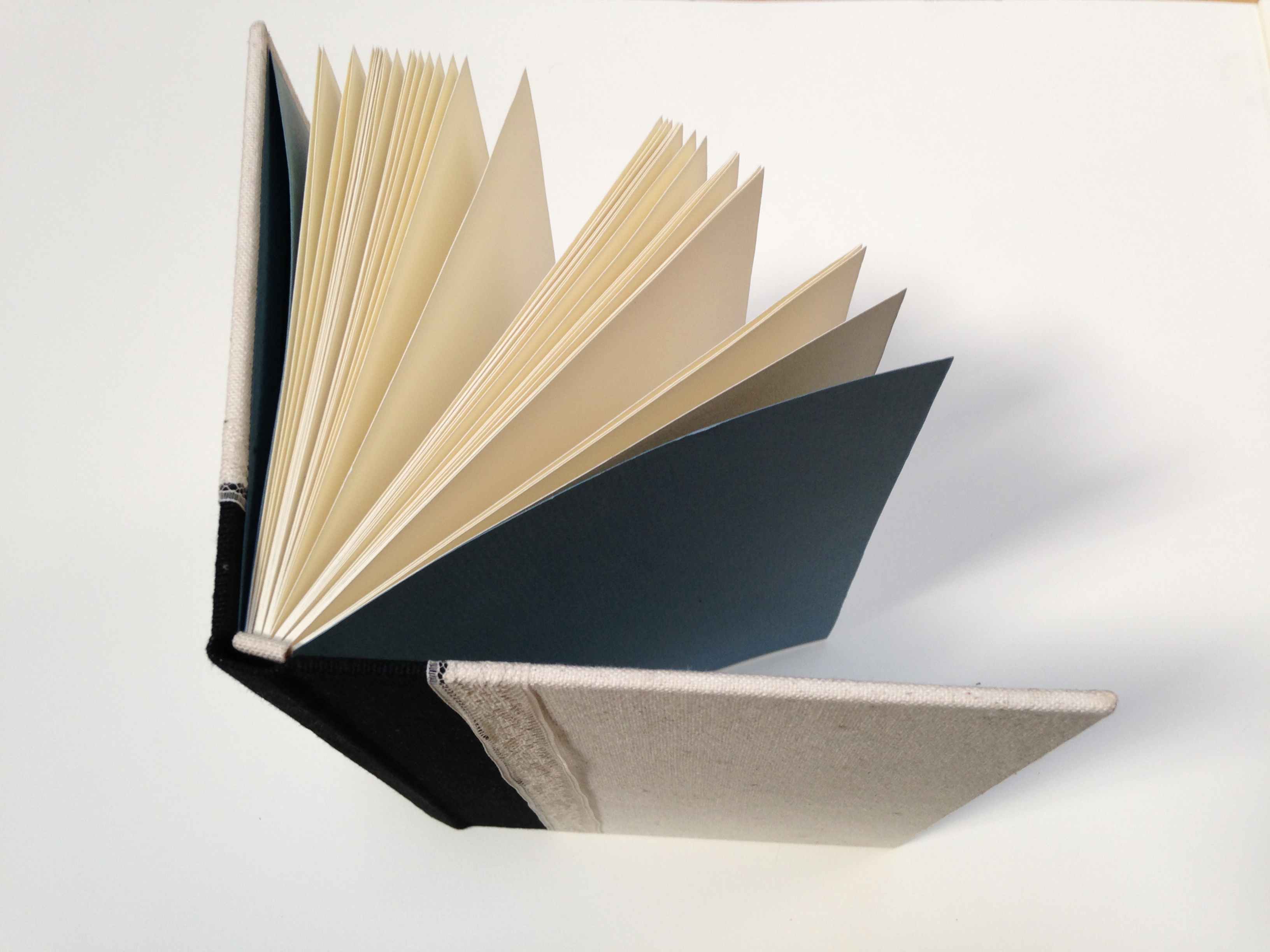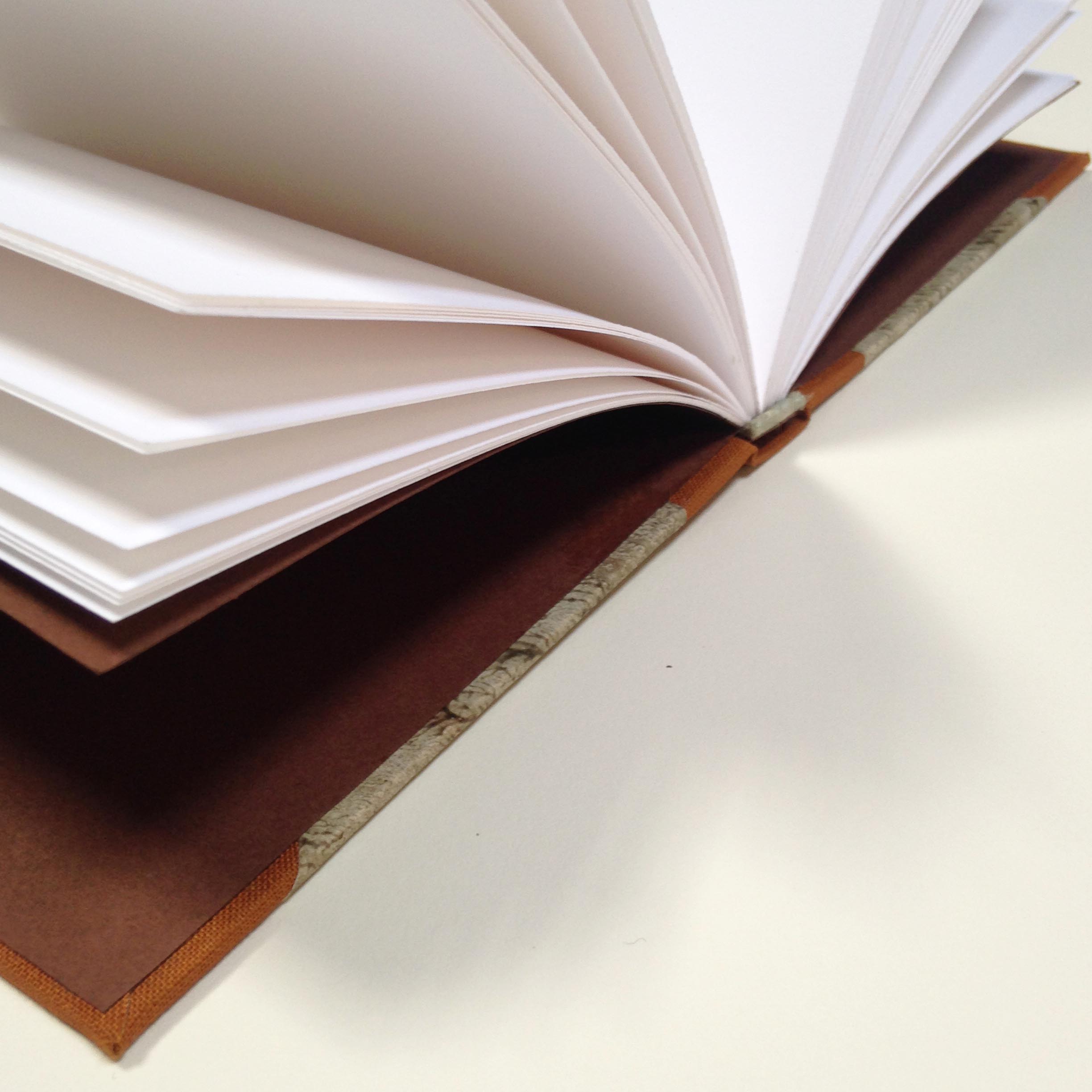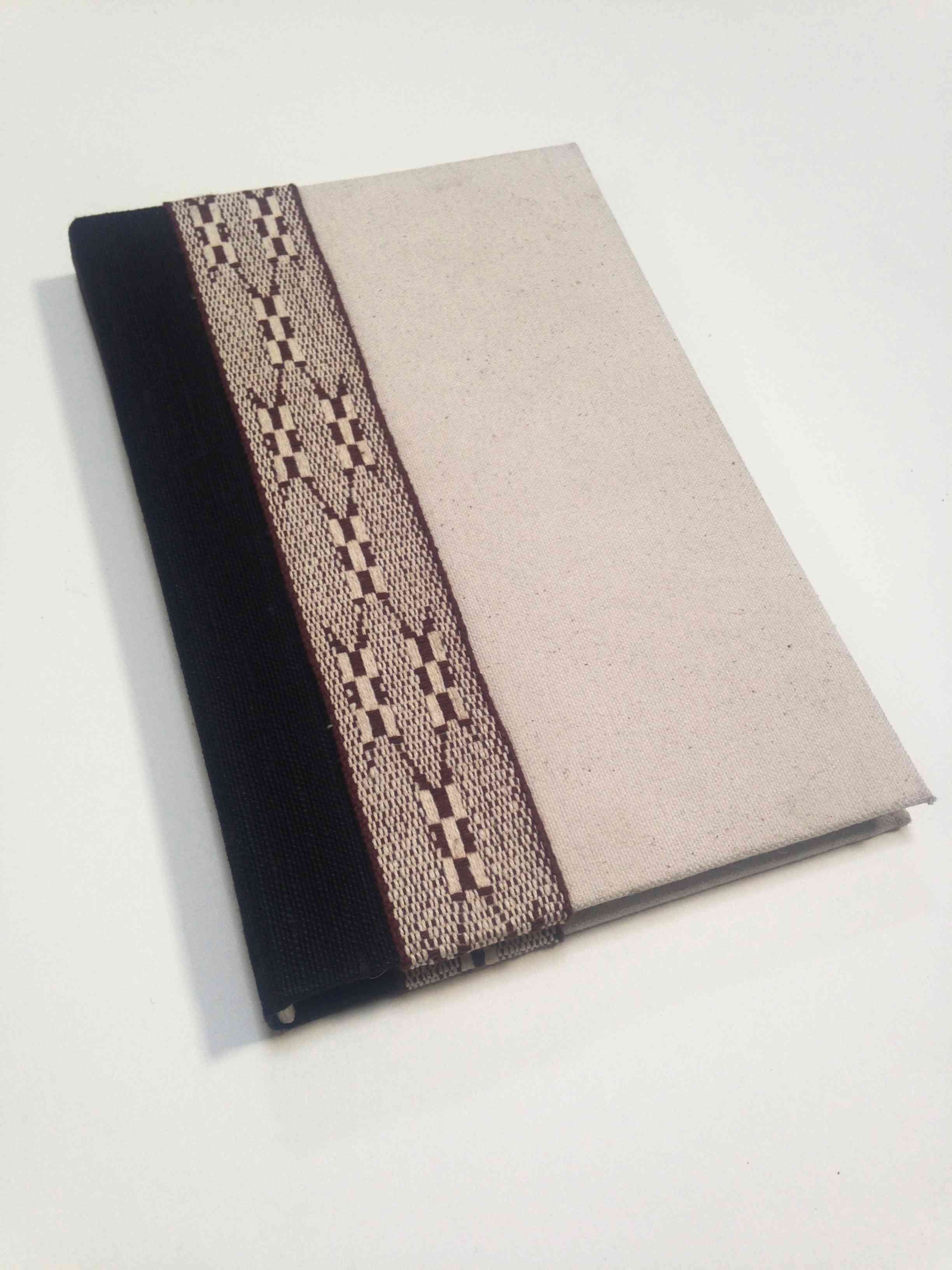![]()

I learned the flat backed case binding from Juliayn Coleman during a full-day workshop at the San Francisco Center for the Book (a Mecca which supports upward of 300 workshops each year in printing, bookbinding and related arts). Through copious note-taking I was able to recreate with good accuracy the process I learned that day. Every bookbinding teacher knows different tricks, and each has learned the common bindings slightly differently. This binding differs from all the others that I know because the pages do not lie completely flat. The spine is designed to be stiff, so the book must spread open.


This last text is perhaps the most skillfully composed of my books, but what is remarkable here to me is the emphasis on elegance of edges. This is a theme which permeates nearly every aspect of bookbinding - architecture too, and many other arts besides - the choice of what to show and what to hide so that the finished product looks both beautiful and also effortless. Here, three colors of cloth have been chosen for the exterior of the book, one color of end paper, and one weight and color of paper for the interior. Endbands cover the unseemly points where the text block sections have folded ends, the ribbon cloth material (itself with carefully woven edges) obfuscates the point where the cover and spine materials join, and the end paper occludes the ragged edges of all three cover materials where they wrap the cover boards. Even the sewing in the spine is done with a single length of waxed linen thread so that no unseemly knot will be visible in some interior page. In this book I have emphasized this kind of perfection as much as possible so that in future I feel more comfortable ignoring it.